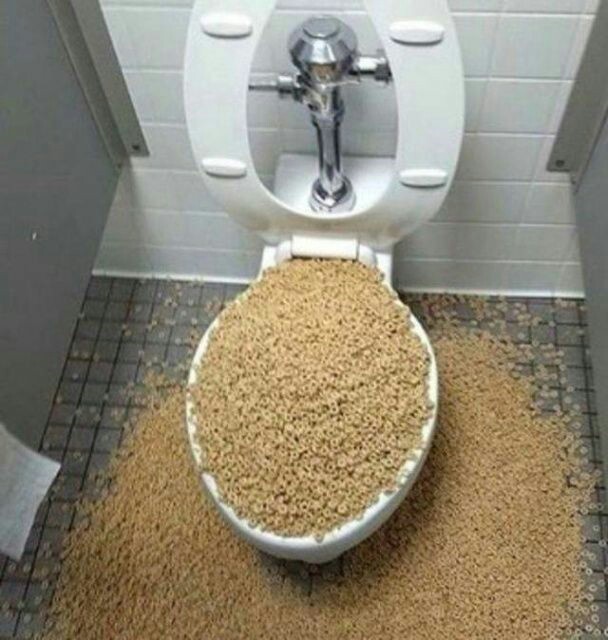Is it Permissible to Flush Food Down the Toilet?
Is it Permissible to Flush Food Down the Toilet?
Blog Article
In this article below you might get a bunch of wonderful information in relation to Flushing Food Down the Toilet?.

Intro
Many individuals are frequently faced with the problem of what to do with food waste, especially when it concerns leftovers or scraps. One common inquiry that develops is whether it's okay to purge food down the commode. In this write-up, we'll look into the reasons why individuals might consider purging food, the consequences of doing so, and alternate techniques for proper disposal.
Reasons why people might take into consideration purging food
Lack of understanding
Some people might not know the potential harm brought on by flushing food down the bathroom. They might incorrectly believe that it's a safe technique.
Comfort
Purging food down the bathroom may look like a quick and simple remedy to taking care of unwanted scraps, specifically when there's no close-by garbage can available.
Idleness
Sometimes, individuals might just select to flush food out of large idleness, without considering the consequences of their actions.
Repercussions of flushing food down the toilet
Ecological impact
Food waste that winds up in rivers can contribute to contamination and damage water ecological communities. In addition, the water used to purge food can strain water resources.
Plumbing problems
Flushing food can result in blocked pipes and drains, causing pricey pipes fixings and troubles.
Types of food that ought to not be purged
Fibrous foods
Foods with coarse appearances such as celery or corn husks can get entangled in pipelines and create clogs.
Starchy foods
Starchy foods like pasta and rice can take in water and swell, bring about blockages in pipelines.
Oils and fats
Greasy foods like bacon or cooking oils need to never be flushed down the bathroom as they can solidify and cause blockages.
Correct disposal approaches for food waste
Utilizing a garbage disposal
For homes furnished with waste disposal unit, food scraps can be ground up and purged via the pipes system. Nonetheless, not all foods are suitable for disposal in this fashion.
Recycling
Specific food product packaging materials can be recycled, minimizing waste and decreasing ecological impact.
Composting
Composting is an environmentally friendly method to take care of food waste. Organic products can be composted and used to enhance soil for gardening.
The relevance of appropriate waste management
Reducing ecological harm
Appropriate waste monitoring practices, such as composting and recycling, assistance decrease air pollution and maintain natural resources for future generations.
Safeguarding pipes systems
By avoiding the practice of flushing food down the commode, home owners can stop pricey plumbing fixings and keep the stability of their plumbing systems.
Conclusion
Finally, while it may be alluring to purge food down the bathroom for benefit, it's important to recognize the possible effects of this action. By adopting appropriate waste monitoring techniques and dealing with food waste responsibly, individuals can add to much healthier plumbing systems and a cleaner setting for all.
FLUSH FOOD DOWN THE TOILET?
FLUSHING FOOD CAN CAUSE BLOCKED DRAINS IN YOUR HOME
All of the plumbing fixtures in your home are connected to the same sewer pipe outside of your home. This outdoor sewer pipe is responsible for transporting all the wastewater from your home to the Council sewer mains. Even small pieces of food that go down the kitchen sink can cause problems for your sewer. It should therefore be obvious that flushing larger bits of food, such as meat, risks a clog in either the toilet itself or the sewer pipes. Flushing greasy food is even more problematic because oil coagulates when it cools, coating the interior lining of your pipes.
THE TOILET IS NOT A BIN
Food isn’t the only thing that people shouldn’t be flushing down the toilet. People use the toilet to dispose of all kinds of things such as tampons, makeup wipes, dental floss, kitty litter and even underwear. Water goes to great lengths to educate residents about the high costs and stress placed on wastewater treatment systems simply from people flushing the wrong stuff down the toilet. It costs taxpayers millions of dollars each year, and homeowners thousands in blocked drain repairs.
FLUSHING FOOD IS A WASTE OF WATER
Flushing food is a waste of our most precious resource - water. In June this year Level 1 water restrictions were introduced to protect water supply from drought conditions. Much of New South Wales continues to be affected by prolonged drought with recent figures revealing up to 97 per cent of the state remains in drought. Depending on whether you have a single or dual flush toilet, every single flush uses between five and 11 litres of water. In the current climate this is a huge amount of water to be wasting on flushing food that should be placed in the bin (or better yet, the compost).
https://www.jabplumbingsolutions.com.au/blog/can-you-flush-food-down-the-toilet

Hopefully you enjoyed our post about . Many thanks for taking a few minutes to browse our blog post. Don't hesitate to pause to promote this blog post if you enjoyed it. Thanks a lot for going through it.
Article Report this page